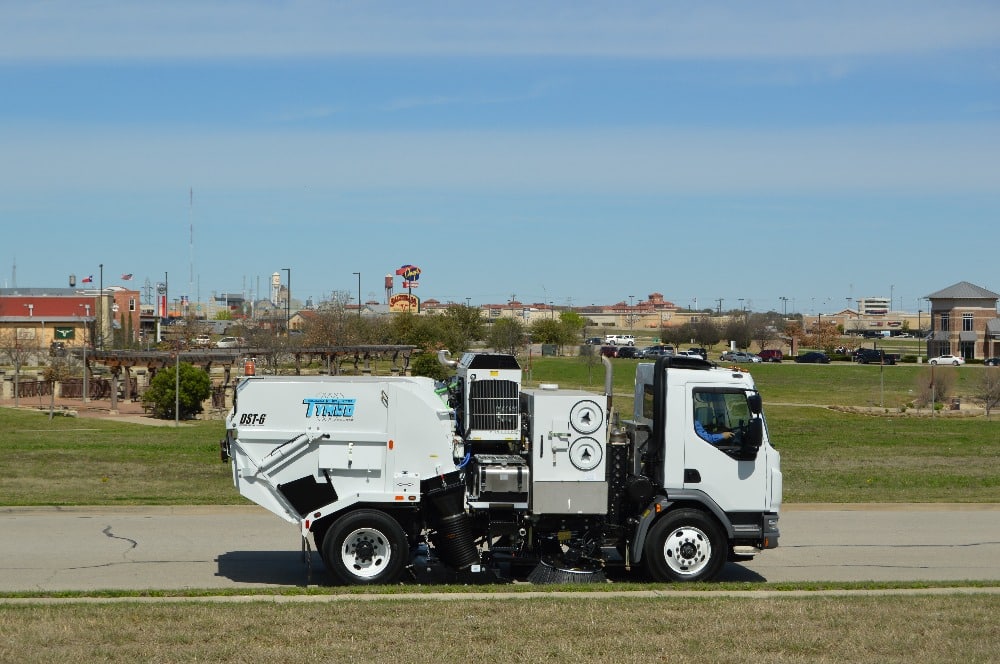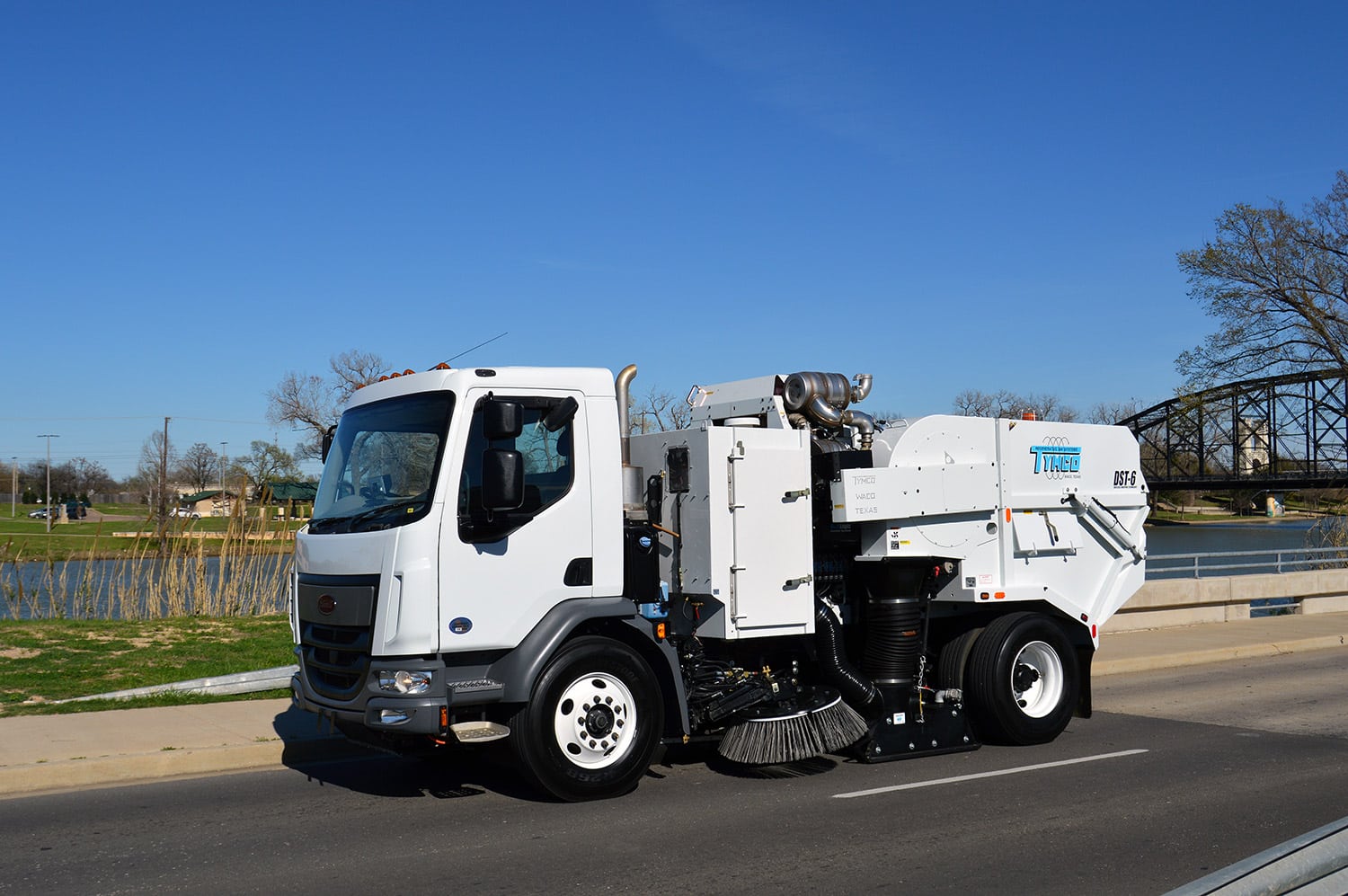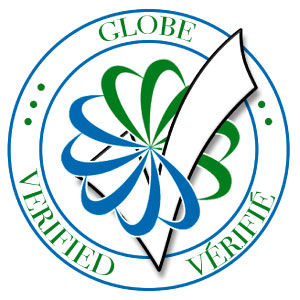Environmental Technology Verification (ETV)
Environmental Technology Verification (ETV) validates environmental performance claims – such as reductions in pollutants and emissions – made by manufacturers and suppliers of technologies, processes and products designed to address environmental challenges.
ETV relies on science, high-quality data and recognized protocols to offer an independent assessment and verification of environmental performance claims. As a result, potential buyers and interested parties can make informed decisions about purchasing and using environmental technologies. As it relates to street sweepers, ETV gives these buyers and interested parties an additional metric to add to their decision-making process when procuring a street sweeper. Today, street sweepers are not used solely for aesthetics, but also for improved stormwater runoff quality and air quality. The TYMCO Model DST-6 and Model DST-4 have been ETV verified for PM10 and PM2.5 performance using the City of Toronto PM10 and PM2.5 Street Sweeper Efficiency Test Protocol. The Model DST-6 has also been verified for Operational On-Street Performance using the City of Toronto Operational On-Street Street Test Protocol. These Street Sweeper Efficiency Test Protocols were developed as part of the City of Toronto Clean Roads to Clean Air Program.
In 2016, the International Organization for Standardization (ISO) created a new international standard – ISO 14034 Environmental Management – Environmental Technology Verification (ETV), making ETV an internationally recognized standard for environmental management.
Street Sweeper Testing Protocols – ETV
In 2000, the City of Toronto, Ontario Canada was exceeding both citywide and year-round ambient air quality concentrations standards for Particulate Matter (PM). PM includes PM10 (inhalable particles that are between 10 µm (microns or micrometers) and 2.5 µm), and PM2.5 (particles 2.5 µm or smaller in diameter), which can enter the blood stream by being absorbed through the lung wall. For reference, a human hair is 50-70 µm in diameter, so PM10 is at least 5 times smaller than the diameter of a human hair, and PM2.5 size particles are at least 20 times smaller than the width of a human hair.
The City of Toronto noted that sources of PM can include eroded pavement as well as brake and tire wear. The majority of ambient PM is found within 3 meters of ground level, which is the same level where people walk, cycle, and drive. After ambient PM settles, it is further broken down and re-entrained to the air by vehicular traffic. Furthermore, LIDAR (Light Detection and Ranging) tests showed that the City of Toronto’s mechanical broom sweeper fleet was kicking up a significant amount of dust, contributing to ambient PM levels.
In order to reduce PM, the city conceived the “Clean Roads to Clean Air” initiative with 2 street sweeper test protocols. The first protocol was the PM10 and PM2.5 Street Sweeper Efficiency Test Protocol, intended to measure sweepers’ pick-up efficiency of ultra-fine material, while minimizing fugitive dust emissions without the use of water for dust suppression.
The second protocol, the Operational On-Street Test Protocol, was intended to evaluate street sweepers’ ability to pick up material in “real-world” conditions, such as ability to pick up leaves, large debris, heavy debris, ability to sweep in wet conditions, “dustless” mode capability, and maneuverability.
After replacing its mechanical street sweeper fleet with regenerative air street sweepers, the City of Toronto performed follow-up tests in 2014 that showed a removal efficiency almost three times higher than sweeping with mechanical sweepers, entrainment efficiency levels during sweeping were significantly improved (90% for PM10 and 89% for PM2.5), and maximum PM10 and PM2.5 ambient air concentrations were four to five times lower than sweeping with mechanical sweepers.
Overall, the results of this study implemented in the real-world environment showed that sweeping with regenerative air sweepers reduced airborne fine particulate matter at street level by at least 27%.
Read Article Clean Roads to Clean Air ProgramETV – PM10 and PM2.5 Street Sweeper Efficiency Test Protocol
The PM10 and PM2.5 Street Sweeper Efficiency Test Protocol calls for 270 kg (595.25 lbs) of Camel White “paint filler,” with a 3 µm mean diameter, spread in 2 thick 30 m (98.5 feet) x 2.75 m (9 feet) strips. Pick-up efficiency is calculated by vacuuming by hand and weighing the remaining residue after a single pass of the sweeper. Ambient PM10 and PM2.5 are monitored by using a series of air quality monitors. Testing is done on aged curbed pavement with cracks and potholes in an enclosed area to eliminate outside wind and PM influences.
In 2004, sweeper manufacturers were invited to participate in a PM10 and PM2.5 Street Sweeper Efficiency Test performed by the City of Toronto. Because of its ability to sweep in “dustless” mode, without the use of water, TYMCO selected their Model DST-6 to participate in the study. Subsequent testing with the Model DST-6 was performed by Prairie Agricultural Machinery Institute (PAMI) in 2005, then verified by Environmental Technology Verification (ETV) Canada. The Model DST-6 has a published pick-up efficiency of greater than 90%, a level unsurpassed by any other sweeper tested to date. In 2008, PAMI also tested the TYMCO Model DST-4, subsequently verifying the results with ETV Canada. The Model DST-4 published a pick-up efficiency of 89%, a level currently only surpassed by the TYMCO Model DST-6.
MODEL DST-6 PM10 AND PM2.5 ETV STATEMENTMODEL DST-4 PM10 AND PM2.5 ETV STATEMENT
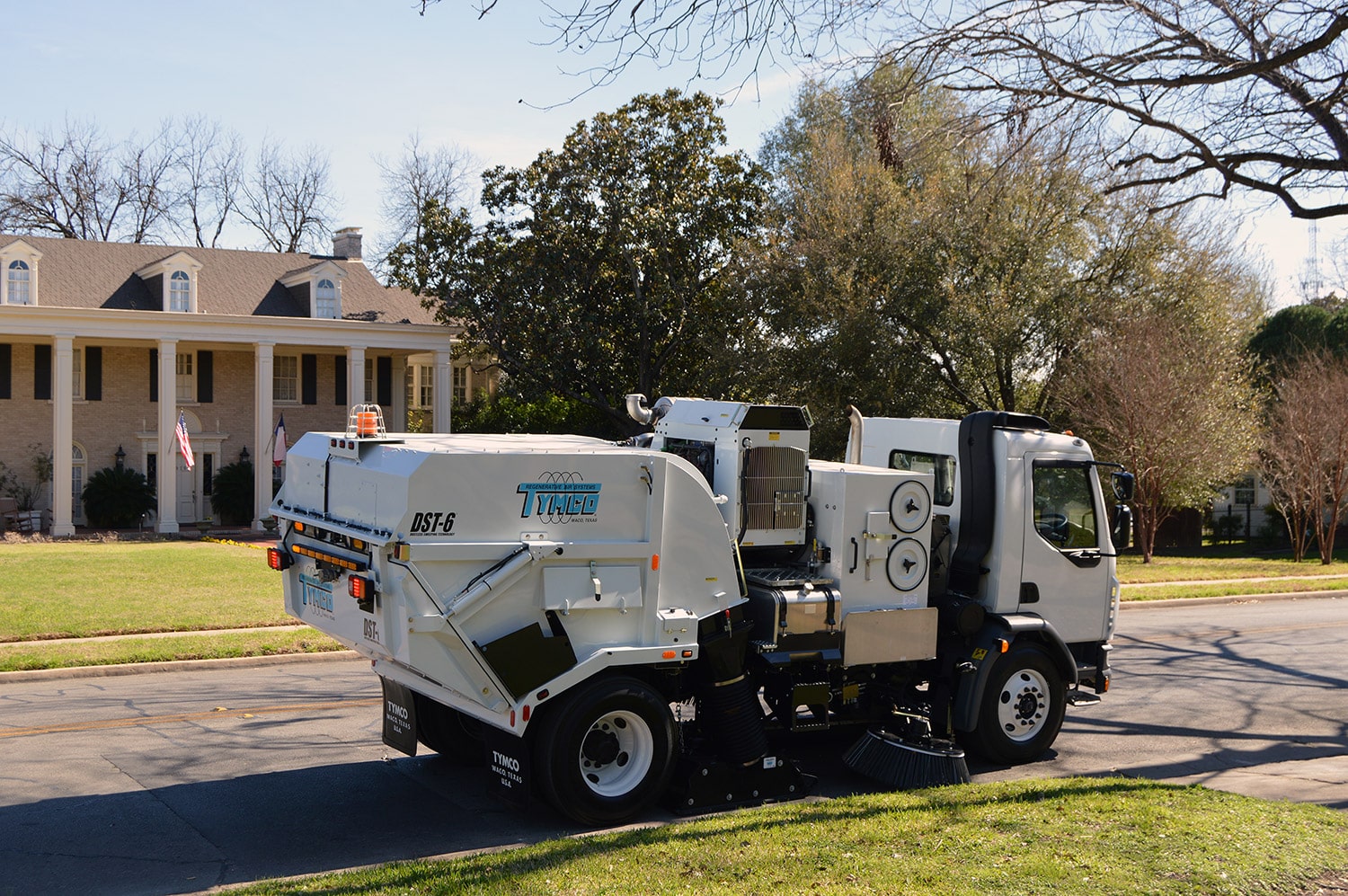
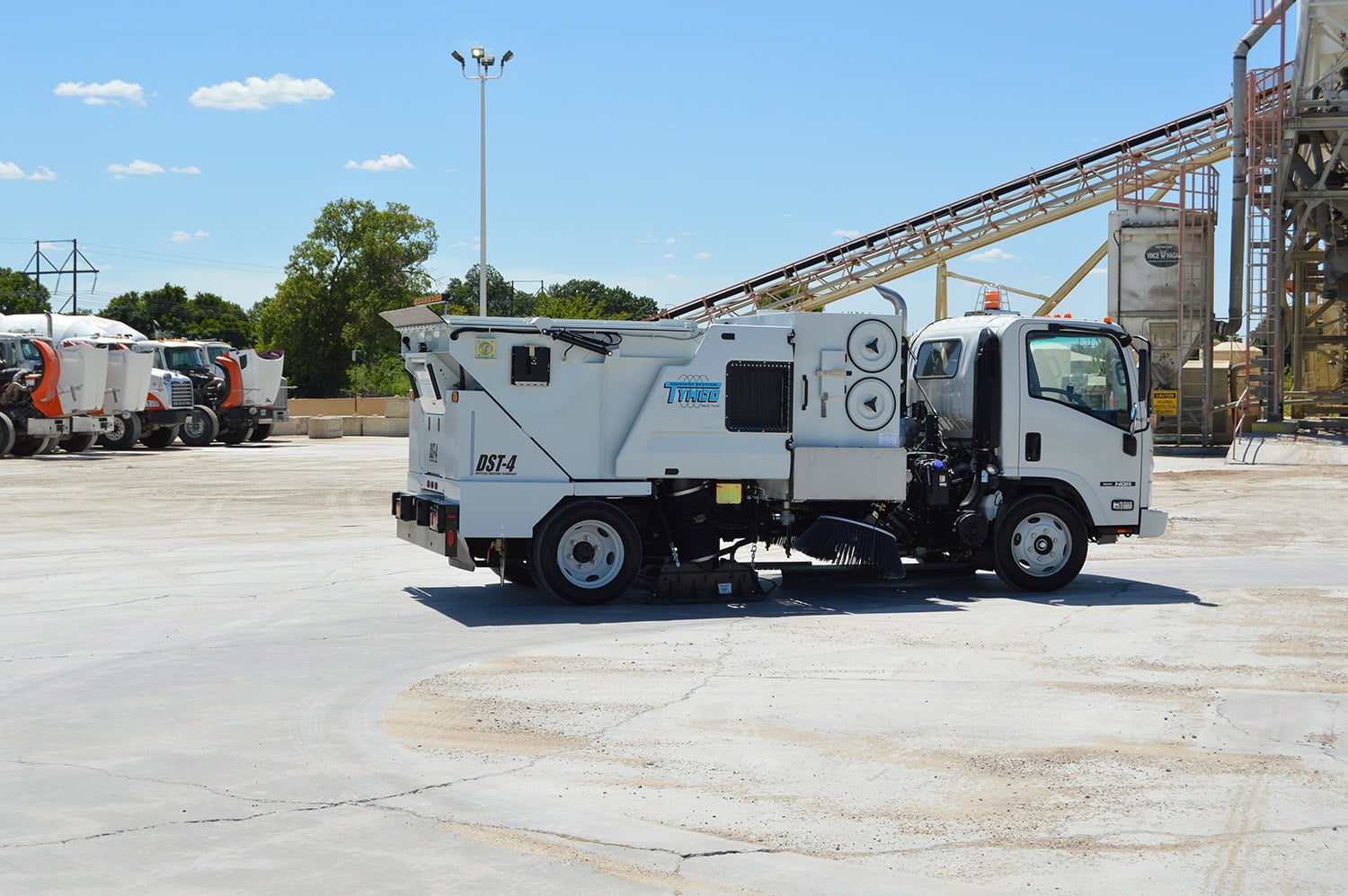
ETV – Operational On-Street Test Protocol
In 2005, the City of Toronto tested the TYMCO Model DST-6 using the Operational On-Street Test Protocol. The Model DST-6 performed well in the test, and in 2016 was subsequently tested by PAMI using the newly revised Operational On-Street Test Protocol, dated May 2016. The test protocol calls for sweeping approximately 345 kg (761 lb) of test material spread out over six test sections, with each section measuring 30 m (98.4 ft) or 40 m (131.2 ft) long. The six test sections are defined by pick-up efficiencies while sweeping on a wet paved surface, sweeping while maneuvering around parked cars, sweeping leaves, sweeping large debris, sweeping heavy debris, and sweeping in “dustless” mode. The results of this test were verified by ETV Canada in 2017.
MODEL DST-6 OPERATIONAL ON-STREET ETV STATEMENT